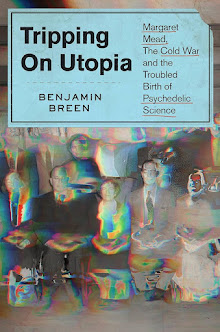I've recently been amassing an image library of paintings by the likes of
Frans Hals,
Adrian Brouwer,
Gerrit Dou,
Gabriel Metsu and
Jan Steen -- Dutch painters who were contemporaries of Rembrandt and Vermeer and, though less well known, were in my view almost as good. I suspect that Vermeer's popularity has given us a somewhat distorted view of everyday life in the
Golden Age of the
Dutch Republic (which peaked from the 1620s to 1670s), which, one would gather from his great works, was a place of
serene repose at the writing desk and
quiet contemplation alongside leaded windows. Yet the works by the artists I've mentioned above tell a different story: one of drunken tobacco-smoking in crowded pubs. Since the Dutch were, after all, famous among their British, French and Iberian contemporaries (and rivals) for their paired addictions to liquor and smoking, I suspect that this latter impression gives a more accurate view of the exuberant, wealthy and self-indulgent era when the Dutch Republic controlled world trade. Below I've cropped some images of the Hollanders enjoying their drugs of choice:
 |
| A family enjoying a feast day with a number of spiritous liquors. The corked bottle on the left may well be gin, which was invented by the Dutch in the 17th century. From: Jan Steen, ‘The way you hear it, is the way you sing it’. (detail). ca. 1665 Oil on canvas. 134 × 163 cm (52.76 × 64.17 in). The Hague, Royal Picture Gallery Mauritshuis. |
 |
| Detail from another work by Jan Steen, Argument over a Card Game. Oil on canvas, 90 x 119 cm Staatliche Museen, Berlin |
 |
| A lower social order enjoying the same vices: Adriaen van Ostade's Carousing peasants in a tavern. c. 1635, Munich. |
What has really struck me from looking closely at these paintings of partying Hollanders is the frequency with which very young children are shown smoking tobacco. Evidently it was thought to be perfectly fine for a child as young as 6 or 8 to be given a pipe to smoke on special occasions! See below:
 |
| Detail from Jan Steen's The Happy Family. Would any Dutch-speakers care to translate the inscription above the smoking girl? Something about pipes, I gather. |
 |
| Another detail of a smoking child from the same work. |
It would appear that children were allowed to drink as well (although this doesn't surprise me nearly as much):
 |
| Detail from Jan Steen's Katzenfamille ("cat family"?). Note the kittens in the upper right corner! |
Finally, here are some images of other drugs that may have been available to consumers in the Dutch Republic via apothecary shops and quack doctors or druggists. (My own research suggests that exotica such as cannabis, opium and datura were widely available in the Indian Ocean trade emporia that the Dutch dominated in this period, and quite possibly were consumed in the domestic Netherlands by those who had grown bored with pipes, cakes and ale). These first two details depict quack doctors with medicines, both by the great Jan Steen:
 |
| Finally, Adriaen Brauwer's famous painting The Bitter Draught, apparently depicting a man imbibing an odd-tasting medicinal drug. | | |
|
|
















5 comments:
'Soo d'Oude Songen, Soo Pypen de Jonge'
(As the Old Sing, So Pipe the Young)
...children do what their parents do, even when they are set a bad example, as is here.
From the Rijksmuseum site:
Despite the merriness, this is not the cosy family party it seems. The happy, chaotic 'Jan Steen household' scenes almost always contain a moral: admonishments against undisciplined behaviour and excess. This painting also contains a more specific message which can be read in the inscription on the mantelpiece to the right. 'Soo d'Oude Songen, Soo Pypen de Jonge' (As the Old Sing, So Pipe the Young) - children do what their parents do, even when they are set a bad example, as is here. The children are exuberant and restless and even the youngest are smoking and drinking. The painter is warning against the consequences of a bad upbringing.
Many thanks Rex! I would guess that the phrase is a play on the double meaning of the word 'pipe' in Dutch as well, no?
Really unique images these are. These drunkers and smokers are really crazy about their addiction.
Love your blog. Just finished a seminar on Early Modern Brazil and found your post on mumia to be great. I love that quote on 24 year old redheads, which we all had a good laugh over last semester.
Not sure if you have seen "Sex and Drugs Before Rock n Roll", but its available for free, and is pretty great. Relates to this postyour interests in early modern drugs:
http://www.worldcat.org/title/sex-and-drugs-before-rock-n-roll-youth-culture-and-masculinity-during-hollands-golden-age/oclc/810232476&referer=brief_results
Also, saw your article on Web as kunstkamer and I totes agree. I always saw Pinterest, hashtags, tags, etc. as analogous to the sorts of groupings you get with early modern similitudes. Pinterest is the new curio-cabinet.
I know that Dutch phrase (from my Afrikaans childhood) as:
"als dee oude zongen zo piepen de jongen" : - 'as the Elders sing, so squeak the Young'. That makes more sense.
So in this painting's note, the word 'piepen' has been changed to 'pypen' ; the overall message of the phrase remains the same.
Post a Comment